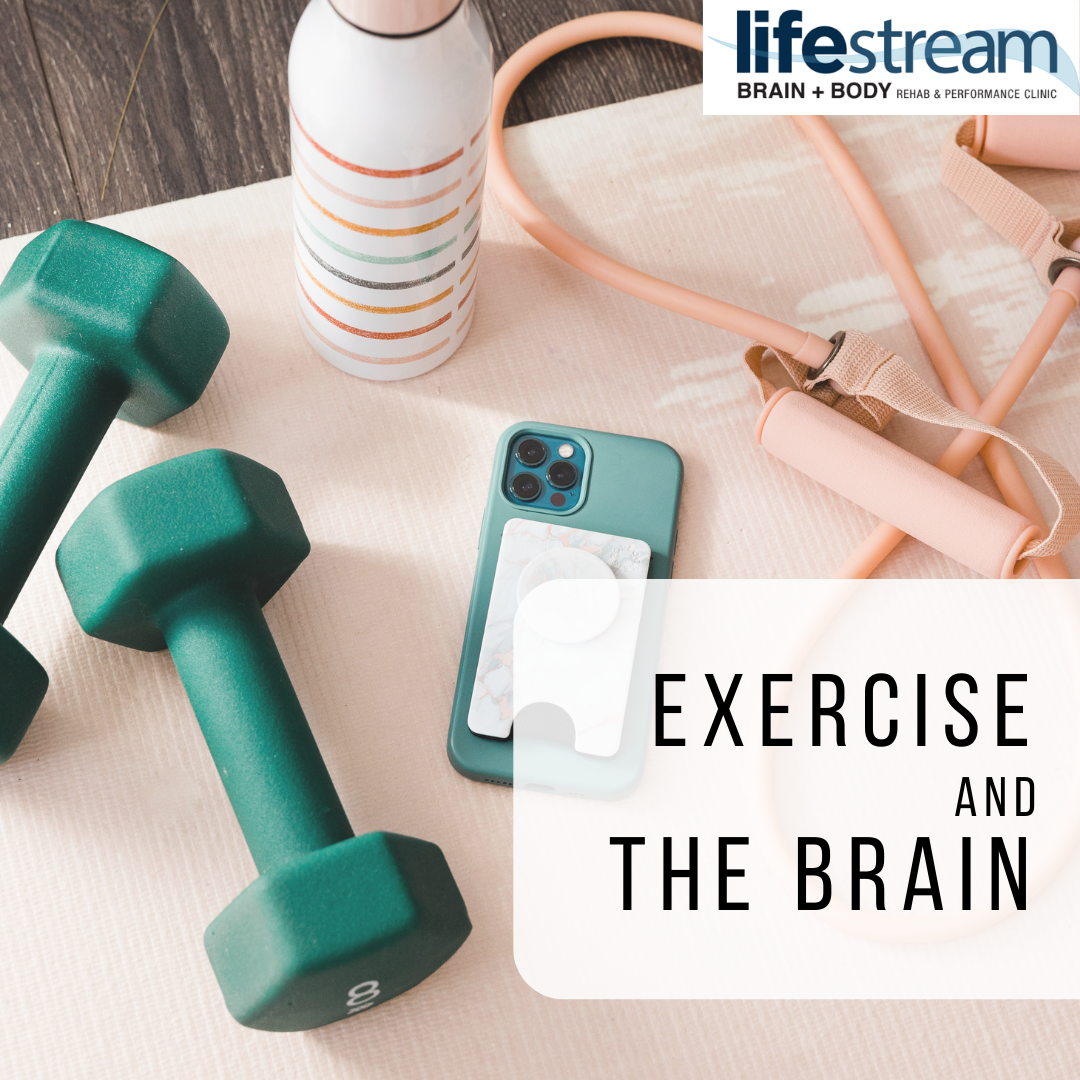Exercise and the Brain
We all know that exercise can help us manage our weight, build muscle, and is generally good for us, right?
Did you know that exercise also helps improve your sleep, mood, thinking and judgment skills, and reduce your risk of some cancers, heart disease, neurodegenerative diseases, and other metabolic diseases such as diabetes and metabolic syndrome?
When we think of the benefits of exercise, improving brain health doesn’t usually come to mind. However, research is showing that regular aerobic exercise (otherwise known as “cardio”, the kind of exercise that gets your heart rate up) helps to improve memory and other learning process. In fact, it can preserve or even increase the volume of the areas of the brain involved with cognitive functions (particularly the hippocampus). Furthermore, exercise induces the creation of new neurons in the brain and more integrated neural networks. Muscle synthesis, as a result of exercise, can cause the release of certain molecules that modify neurotransmission in specific areas of the brain.
In addition to structural changes, exercise can also promote recovery after an injury and has anti-depressive effects. One reason for this could be is that exercise has been known to increase tryptophan (a type of amino acid) levels in the blood which is a precursor to serotonin. A lot of antidepressive medications attempt to increase serotonin as it has a relaxing, feel good effect. Exercise also increases blood flow to the brain and releases endorphins that help to improve mood by influencing pain and the body’s response to stress. Also contributing to this “feel good” effect is an increase in opioids made by the body as a result of acute exercise (a burst of exercise).
Acute, or short-term exercise, has also been shown to increase cognitive function and performance- more specifically motor skills and academic achievement. Studies show that exercise intensity greatly affects the responses that contribute to improved function.
You might be asking yourself this question, what is the best kind of exercise for my brain health?
The kind that you can get yourself to do regularly and enjoy. Sure, a mixture of aerobic (cardio) and resistance training (weight lifting) are beneficial in different ways, but if you absolutely hate both, maybe tennis is the way to go. Or biking. Or swimming.
Here are some tips for incorporating exercise into your life or finding ways of exercising that are enjoyable for you:
– Find an exercise buddy: Nothing is as fun if you’re doing it by yourself. Find someone else who is as committed to exercising as you are and will encourage you to exercise when you don’t want to.
– Be willing to try something new at least two times: Maybe you decide to try a new fitness class at the gym or a friend invites you to try something out with them like rock climbing or hiking. Maybe something goes wrong and you absolutely hated it. Try it at least one more time. There are always things that can randomly go wrong so give something two chances before giving up on it.
– Try mixing up your exercise routine: Doing the same thing over and over again can increase the risk of injury. Try doing a different activity or exercise routine each time you plan to workout this week.
– Choose activities that you enjoy so that your workout routine is sustainable. If you’re having trouble finding something you enjoy, keep trying new things until something sticks. Just don’t give up.
Sources:
https://medlineplus.gov/benefitsofexercise.html
https://www.nia.nih.gov/health/real-life-benefits-exercise-and-physical-activity
https://neurosciencenews.com/fitness-neuroscience-23228/
https://www.ncbi.nlm.nih.gov/pmc/articles/PMC6770965/
https://www.ncbi.nlm.nih.gov/pmc/articles/PMC2680508/
https://pubmed.ncbi.nlm.nih.gov/2678895/
https://www.ncbi.nlm.nih.gov/pmc/articles/PMC2077351/#:~:text=Several%20lines%20of%20research%20suggest,function%20in%20the%20human%20brain.
https://pubmed.ncbi.nlm.nih.gov/22480735/
https://www.ncbi.nlm.nih.gov/pmc/articles/PMC5928534/

